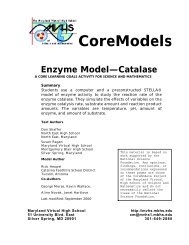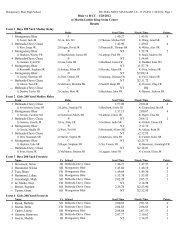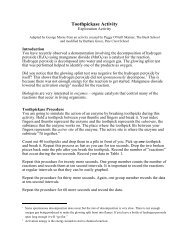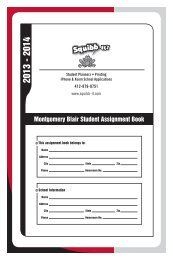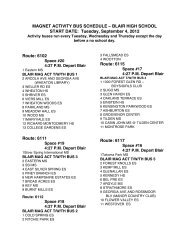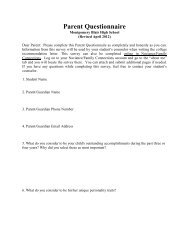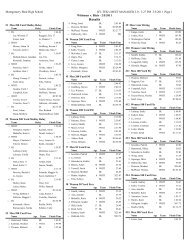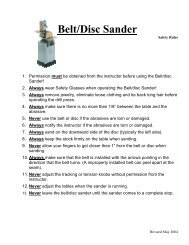The Structure and Function of Enzymes MODULE 1 MODULE 2 ...
The Structure and Function of Enzymes MODULE 1 MODULE 2 ...
The Structure and Function of Enzymes MODULE 1 MODULE 2 ...
You also want an ePaper? Increase the reach of your titles
YUMPU automatically turns print PDFs into web optimized ePapers that Google loves.
<strong>The</strong> <strong>Structure</strong> <strong>and</strong> <strong>Function</strong> <strong>of</strong> <strong>Enzymes</strong>Title <strong>of</strong> unit:Unit goal:<strong>The</strong> <strong>Structure</strong> <strong>and</strong> <strong>Function</strong> <strong>of</strong> <strong>Enzymes</strong>Students develop an underst<strong>and</strong>ing <strong>of</strong> the importance <strong>of</strong> enzymes to theirsurvival <strong>and</strong> in their daily lives.Grade Level: 9 – 12General Subject Area: BiologyMinimum time required for the unit:Eight 45-minute class periodsConcepts learned across all unit modules:• Basic enzyme structure <strong>and</strong> function• Experimental design• Data organization• Data analysisSt<strong>and</strong>ards addressed by unit modulesMaryl<strong>and</strong> State Department <strong>of</strong> Education High School Science Core Learning Goals(see www.mdk12.org)Goal/Expectation Indicator/Assessment LimitGoal 1 <strong>The</strong> student will demonstrate ways <strong>of</strong> thinking <strong>and</strong> acting inherent in thepractice <strong>of</strong> science. <strong>The</strong> student will use the language <strong>and</strong> instruments <strong>of</strong>science to collect, organize, interpret, calculate, <strong>and</strong> communicateinformation.1.2 <strong>The</strong> student will pose scientific questions <strong>and</strong> suggest experimentalapproaches to provide answers to questions.1.2.7 <strong>The</strong> student will use relationships discovered in the lab to explainphenomena observed outside the laboratory.1.3 <strong>The</strong> student will carry out scientific investigations effectively <strong>and</strong> employ theinstruments, systems <strong>of</strong> measurement, <strong>and</strong> materials <strong>of</strong> scienceappropriately.1.3.1 <strong>The</strong> student will develop <strong>and</strong> demonstrate skills in using lab <strong>and</strong> fieldequipment to perform investigative techniques.1.3.2 <strong>The</strong> student will recognize safe laboratory procedures.1.3.3 <strong>The</strong> student will demonstrate safe h<strong>and</strong>ling <strong>of</strong> the chemicals <strong>and</strong> materials<strong>of</strong> science.1.4 <strong>The</strong> student will demonstrate that data analysis is a vital aspect <strong>of</strong> theprocess <strong>of</strong> scientific inquiry <strong>and</strong> communication.1.4.1 <strong>The</strong> student will organize data appropriately using techniques such astables, graphs, <strong>and</strong> webs. (for graphs: axes labeled with appropriatequantities, appropriate units on axes, axes labeled with appropriateintervals, independent <strong>and</strong> dependent variables on correct axes,appropriate title)1.4.2 <strong>The</strong> student will analyze data to make predictions, decisions, or drawconclusions.2





